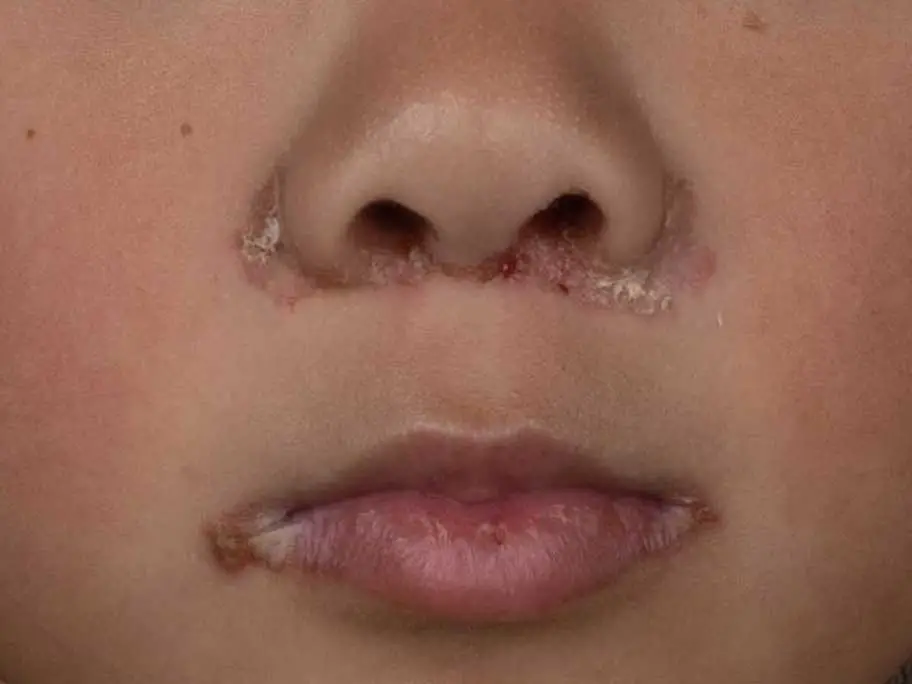
Indie is a three-year-old girl with pruritic erythema on the face and extremities present from the age of 18 months, when she weaned from breastmilk.
Atopic dermatitis has been diagnosed but treatment with topical steroids/tacrolimus and emollients have had no effect, despite good adherence. There is associated intermittent diarrhoea, fatigue and hair loss.
Indie was born at term, vaginally, and eats a varied diet. Developmental milestones are within the expected range.
Her younger brother has similar milder symptoms. No other family members are affected.
On examination, weight and height are on the third centile. There are scaly erythematous plaques involving the fingers and toes, inner canthus and perioral and perinasal areas (pictured).
Blood tests show a mild normocytic normochromic anaemia, leucopenia and reduced ALP, with otherwise normal LFT, EUC, iron studies, B12, coeliac serology and immunoglobulin E.
What is the diagnosis?
Correct!
Acrodermatitis enteropathica is an autosomal recessive genetic zinc deficiency disorder.
It is caused by mutations of the SLC39A4 gene which encodes a zinc transporter protein, resulting in a partial block of intestinal zinc absorption.
The global incidence is around one in 500,000 births, with no racial predisposition reported.
Inherited and nutritional zinc deficiencies have similar clinical presentations; however, symptoms tend to occur after weaning with inherited causes, whereas nutritional zinc deficiency in newborns typically occurs during periods of exclusive breastfeeding.
Typical clinical manifestations are acral and periorificial dermatitis, diarrhoea, and alopecia, but only 20% of patients exhibit this classic triad simultaneously.
Other potential features include neuropsychiatric symptoms and, in severe cases, growth restriction and secondary infections.
Investigation will reveal low serum zinc. Low ALP levels, anaemia, and leucopenia are often also present.
Genetic testing confirms the diagnosis of inherited acrodermatitis enteropathica.
Treatment for primary acrodermatitis enteropathica is with oral elemental zinc at a dose of 3mg/kg/day.
Zinc and copper levels are monitored every 3-6 months to guide dose adjustment.
Co-administration of copper may be required, as zinc can competitively inhibit copper absorption.
Typically, diarrhoea and mood symptoms improve within 24 hours of treatment.
Skin healing occurs within a week and normal hair growth is seen within a month.
